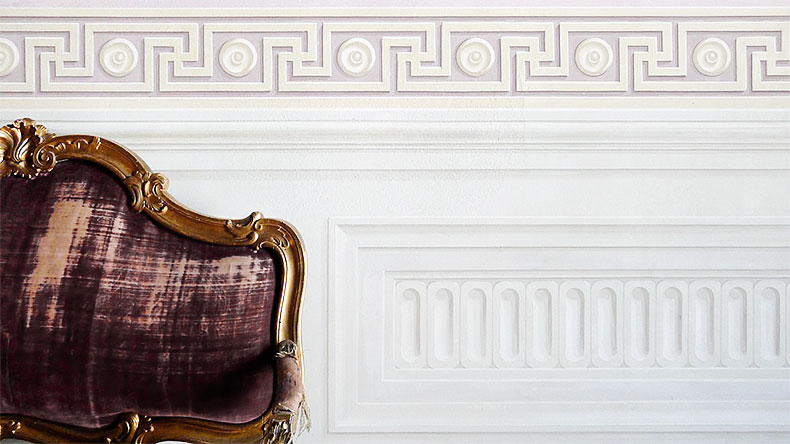This was a restoration and decoration project in a palazzo in Florence. The large piano nobile rooms connect directly to each other in the old sense of en suite. Large French windows open on to a long balcony around the courtyard. Re-modelling of the architecture was done by Agnese Mazzei and her expert team of craftsmen.
Theatrical marbling
Research of the door frames yielded evidence of theatrical marbling under layers of paint and old oil based marbling. Originally the frames must have been painted in a wax emulsion directly onto a very fine lime plaster. The colours had not faded but sadly we only discovered a couple of pieces in good condition.
Smooth finish
Based on these findings I made up a new wax paint and applied this to the re-plastered door frames. The wax was then melted to a smooth finish with a heat gun. (Wax does not fade in colour, is anti-static and easy to polish.)
A large column of Breccia Violetta stone at nearby Palazzo Pitti provided the model for the marbling. It now looks as it might well have three centuries ago, when the rooms were first decorated.
Colour matching
The wall decoration was also completely repainted once all the colours had been matched to the fragments of the originals.
For the restoration of murals (among them a monumental fresco depicting one of the labours of Hercules) Grenier Conservation was involved.



